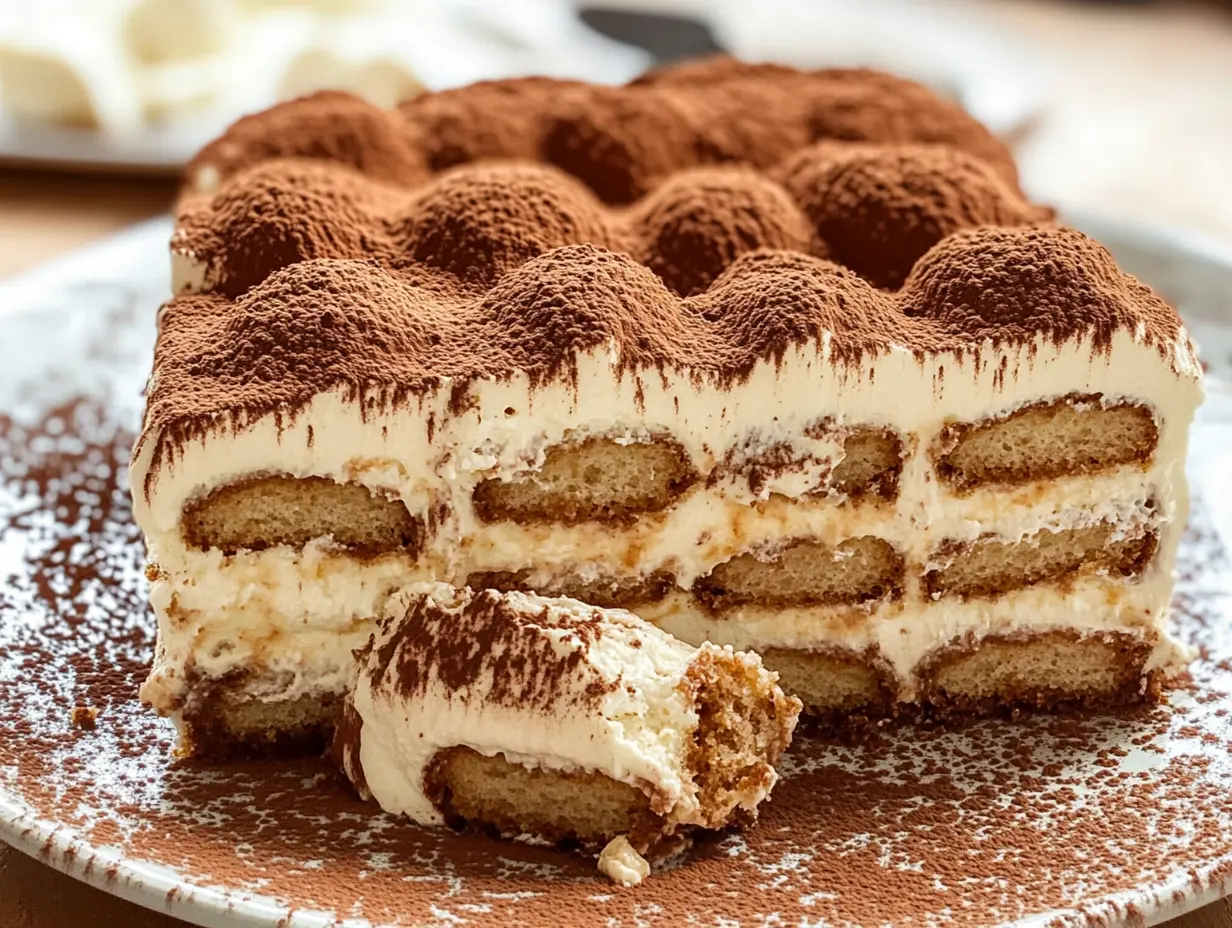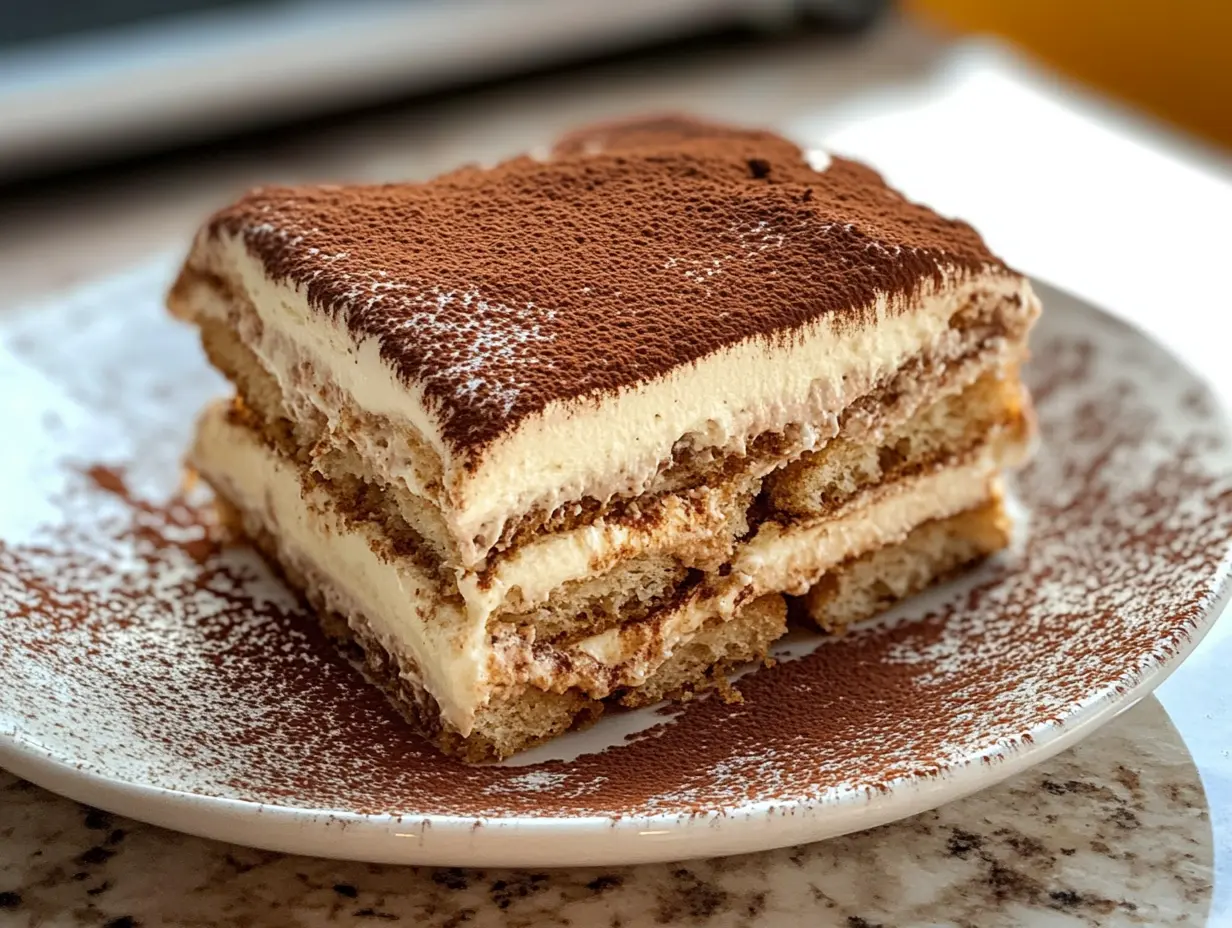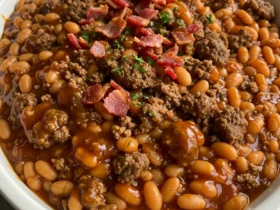Tiramisu is one of those desserts that instantly transports you to the heart of Italy. Its layers of espresso-soaked ladyfingers, luscious mascarpone cream, and dusting of rich cocoa powder create a sensory experience that is beloved worldwide. But what exactly makes this dessert so irresistible? In this article, we’ll break down the key reasons why tiramisu is such a flavor sensation.
The Perfect Flavor Combination
Tiramisu’s irresistibility lies in its harmonious blend of ingredients that each bring their own flavor profiles to the table, yet work together in perfect unison. The combination of espresso, mascarpone, and cocoa powder delivers a multilayered flavor experience that appeals to a wide range of palates.
- Espresso: At the core of tiramisu is the bold, rich flavor of espresso, which adds a deep, almost smoky bitterness to the dessert. The bitter notes from the coffee complement the sweetness from the cream, providing a contrast that keeps the dessert from becoming too sweet. Moreover, espresso contributes an aromatic element that stimulates the senses before you even take the first bite. For more details about the role of espresso and coffee in desserts, check out Fine Dining Lovers.
- Mascarpone Cream: The mascarpone cheese, a staple of traditional Italian desserts, brings a rich and creamy texture to tiramisu. Its mild flavor allows the coffee and cocoa to shine, while also contributing a subtle, buttery taste that ties the flavors together. What makes mascarpone unique compared to other cream cheeses is its high fat content, which gives tiramisu its luxurious, melt-in-the-mouth texture. You can find out more about mascarpone’s role in desserts at Foodie Champ.
- Cocoa Powder: The final dusting of cocoa powder on top is more than just decoration; it serves to enhance the dessert’s overall complexity. Cocoa’s bitterness complements both the sweetness of the cream and the boldness of the coffee, creating a perfectly balanced bite. Each spoonful offers a satisfying blend of creamy and slightly bitter flavors that continue to evolve with every layer.
This delicate balance between sweet, bitter, and creamy elements is what makes tiramisu such a universally beloved dessert. With each bite, you experience a seamless marriage of flavors that is both rich and refreshing.
Tiramisu’s Irresistible Textures
The sensory appeal of tiramisu goes beyond its flavors—it’s also about the contrasting textures that make each bite a joy to savor. The combination of soft mascarpone cream with the slightly firm, espresso-soaked ladyfingers creates a multi-layered texture that delights the palate.
- Ladyfingers: These delicate sponge biscuits are the backbone of tiramisu’s structure. When soaked in espresso, the ladyfingers absorb just enough liquid to soften while still maintaining a slight firmness. This contrast is essential to tiramisu’s appeal, providing a subtle bite amidst the creamy layers. It’s this perfect soak time that prevents the dessert from becoming too soggy, allowing for a more pleasant mouthfeel. If you’re curious about how to get the ideal texture in tiramisu, refer to Fine Dining Lovers for expert tips on mastering the art of tiramisu.
- Creamy Mascarpone Filling: The light and airy mascarpone cream adds a luscious texture to the dessert, contrasting the sponge-like ladyfingers. Each spoonful feels smooth and indulgent, without being too dense. What makes this texture so irresistible is the way it melts in your mouth, leaving behind the rich flavors of mascarpone and coffee.
- Chilled Dessert: Another critical component to tiramisu’s texture is the temperature. Served chilled, the cream becomes firmer, while the ladyfingers remain tender but structured. This balance between the cold, creamy mascarpone and the slightly firm ladyfingers is a big part of what makes tiramisu so addictive. It’s the combination of temperatures and textures that elevates it from a simple dessert to an extraordinary experience.
A Matter of Balance in Ingredients
Tiramisu is the ultimate testament to the power of ingredient balance. No single flavor dominates the dessert, and that’s what makes it so memorable. Achieving this perfect balance takes more than just following a recipe—it requires careful attention to the proportions of each ingredient.
- Coffee vs. Cream: One of the most critical aspects of tiramisu is the ratio between the coffee-soaked ladyfingers and the mascarpone cream. Too much coffee can overwhelm the palate, making the dessert too bitter, while an overly sweet mascarpone layer can make it feel heavy. Finding the right amount of coffee to infuse the ladyfingers, without drowning them, ensures a perfect harmony between bitterness and sweetness.
- Sweetness Control: A well-made tiramisu is not overly sweet. While the mascarpone and sugar add richness, they shouldn’t dominate the dessert. It’s the measured sweetness that allows the other flavors—especially the coffee and cocoa—to stand out. An overly sweet tiramisu risks losing the delicate interplay of flavors that makes it so special. For advice on mastering ingredient proportions in tiramisu, you can check out La Cucina Italiana.
- Resting Time: Letting tiramisu sit in the fridge for several hours is not just a recommendation, it’s essential. During this resting period, the flavors meld together, allowing the coffee to infuse into the mascarpone and ladyfingers, while the cream firms up. This resting time creates a more cohesive dessert where each bite delivers a balanced combination of flavors. The longer it sits, the more the ingredients complement each other, turning a good tiramisu into a truly great one.
When all these elements—coffee, cream, cocoa, and chilling time—are in harmony, you get the ultimate indulgence that is tiramisu.
Traditional vs. Modern Interpretations of Tiramisu
Tiramisu, a beloved Italian dessert, has seen a delightful evolution from its traditional roots to a variety of modern interpretations. Whether you’re a fan of the classic recipe or curious about contemporary twists, understanding these variations can deepen your appreciation for this iconic treat.
Classic Tiramisu Recipe
The traditional tiramisu recipe is a timeless classic that rarely disappoints. It features a harmonious blend of flavors and textures, combining:
- Espresso: The rich coffee flavor that provides a bold kick.
- Mascarpone Cheese: Creamy and smooth, it forms the luscious base of the dessert.
- Ladyfingers: Light and airy, they soak up the espresso and provide structure.
- Eggs: Used to create a rich, custard-like texture.
- Cocoa Powder: Sprinkled on top for a finishing touch of bitterness.
This tried-and-true combination has made tiramisu a favorite for many, celebrated for its balanced taste and elegant presentation.
Modern Variations
In recent years, innovative chefs have reimagined tiramisu, offering a range of exciting new flavors and presentations. Some popular modern variations include:
- Fruit Flavors: From strawberry to lemon, these variations swap the traditional espresso for vibrant fruit flavors, creating a refreshing twist.
- Deconstructed Versions: Served in a glass or jar, these versions offer a visually appealing and individualized take on the classic, allowing each layer to shine.
- Non-Alcoholic Options: For those who prefer to avoid alcohol, modern recipes often exclude the traditional Marsala wine or substitute it with non-alcoholic alternatives.
- Egg-Free Recipes: To cater to those concerned about raw eggs, many contemporary recipes use cooked eggs or omit them altogether.
These modern interpretations showcase the versatility of tiramisu, making it accessible and enjoyable for a broader audience.
The Cultural Significance of Tiramisu
Beyond its delicious flavor and texture, tiramisu holds a special place in Italian culture. The name “tiramisu” translates to “pick me up” in Italian, reflecting the dessert’s energizing blend of espresso and sugar.
A Symbol of Comfort
Tiramisu is more than just a dessert; it embodies comfort and celebration. Often enjoyed during family gatherings and special occasions, it represents indulgence and togetherness, making it a cherished part of many festive meals.
Global Fame
Although tiramisu originated in Italy, its appeal has spread worldwide. From its roots in Rome to its presence on dessert menus in New York and beyond, tiramisu has become a global phenomenon. Its universal popularity attests to its irresistible charm and delicious taste.
FAQs
What makes tiramisu so special?
The magic of tiramisu lies in its perfect balance of flavors. The robust espresso, creamy mascarpone, and hint of cocoa combine to create a taste experience that is both indulgent and memorable.
Does tiramisu always have alcohol?
Traditionally, tiramisu includes a splash of Marsala wine, but many modern recipes offer non-alcoholic versions to accommodate different preferences.
Is tiramisu safe to eat if it contains raw eggs?
While traditional tiramisu recipes use raw eggs, many contemporary versions either cook the eggs or omit them to enhance safety and cater to varying taste preferences.












Leave a Reply